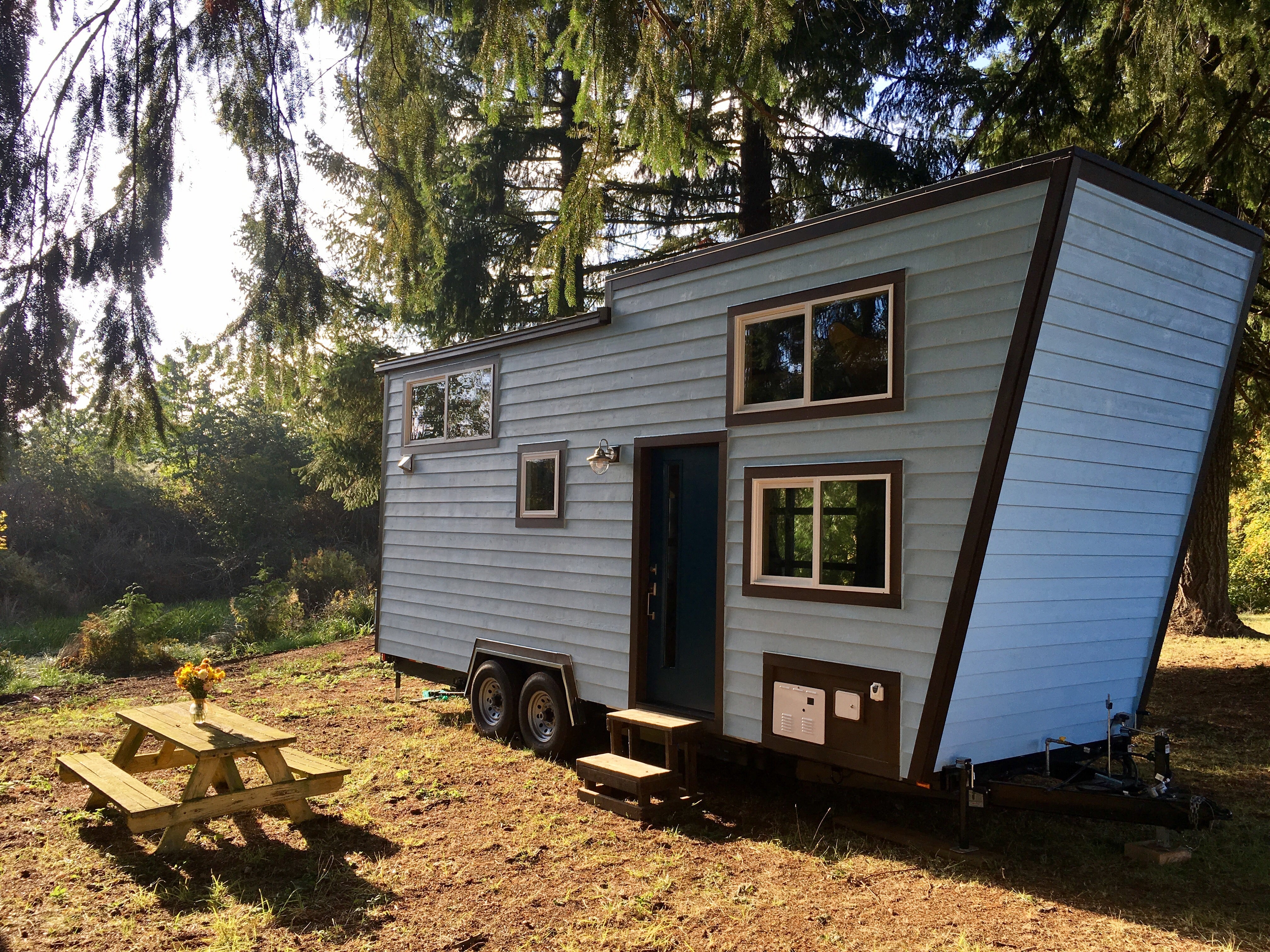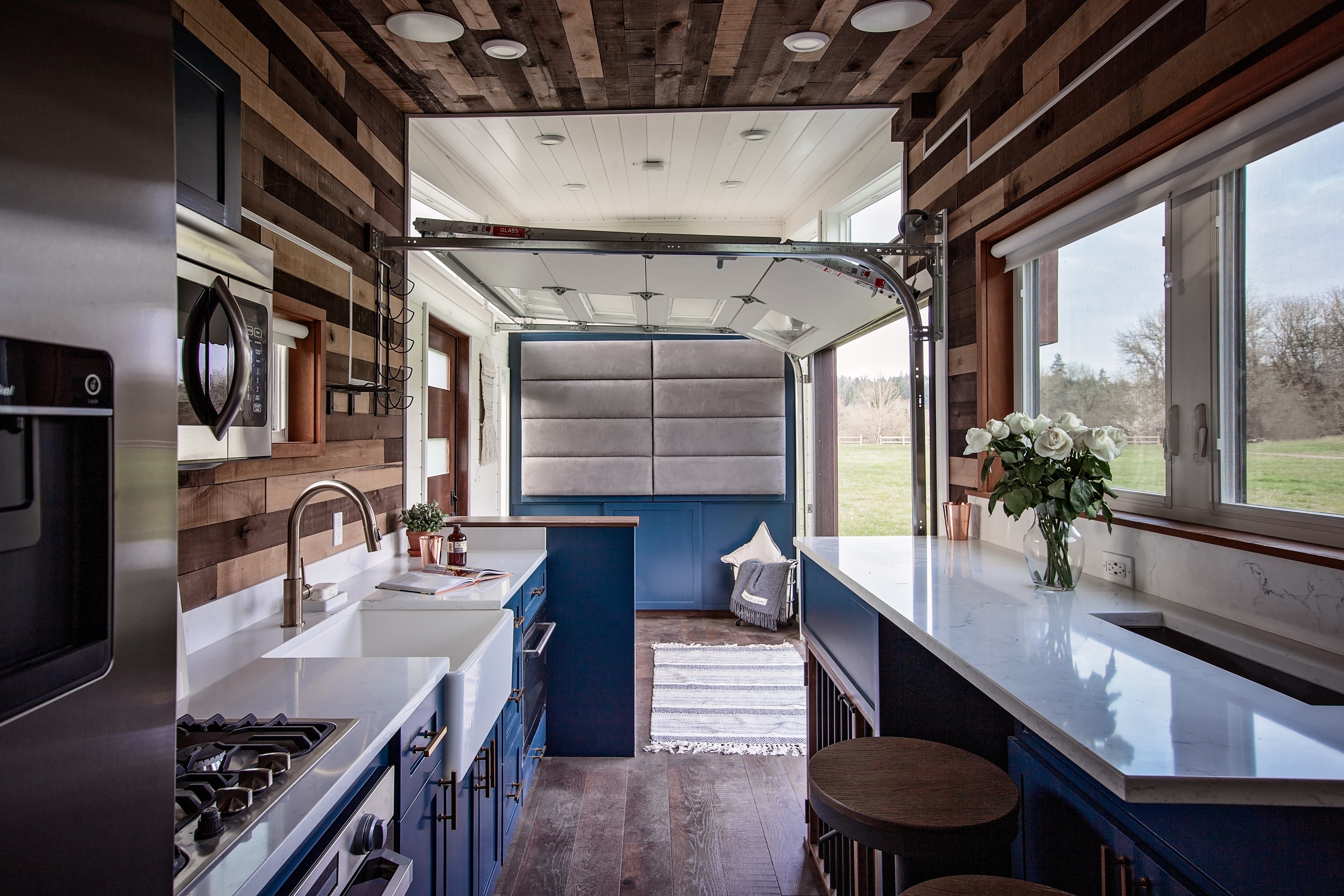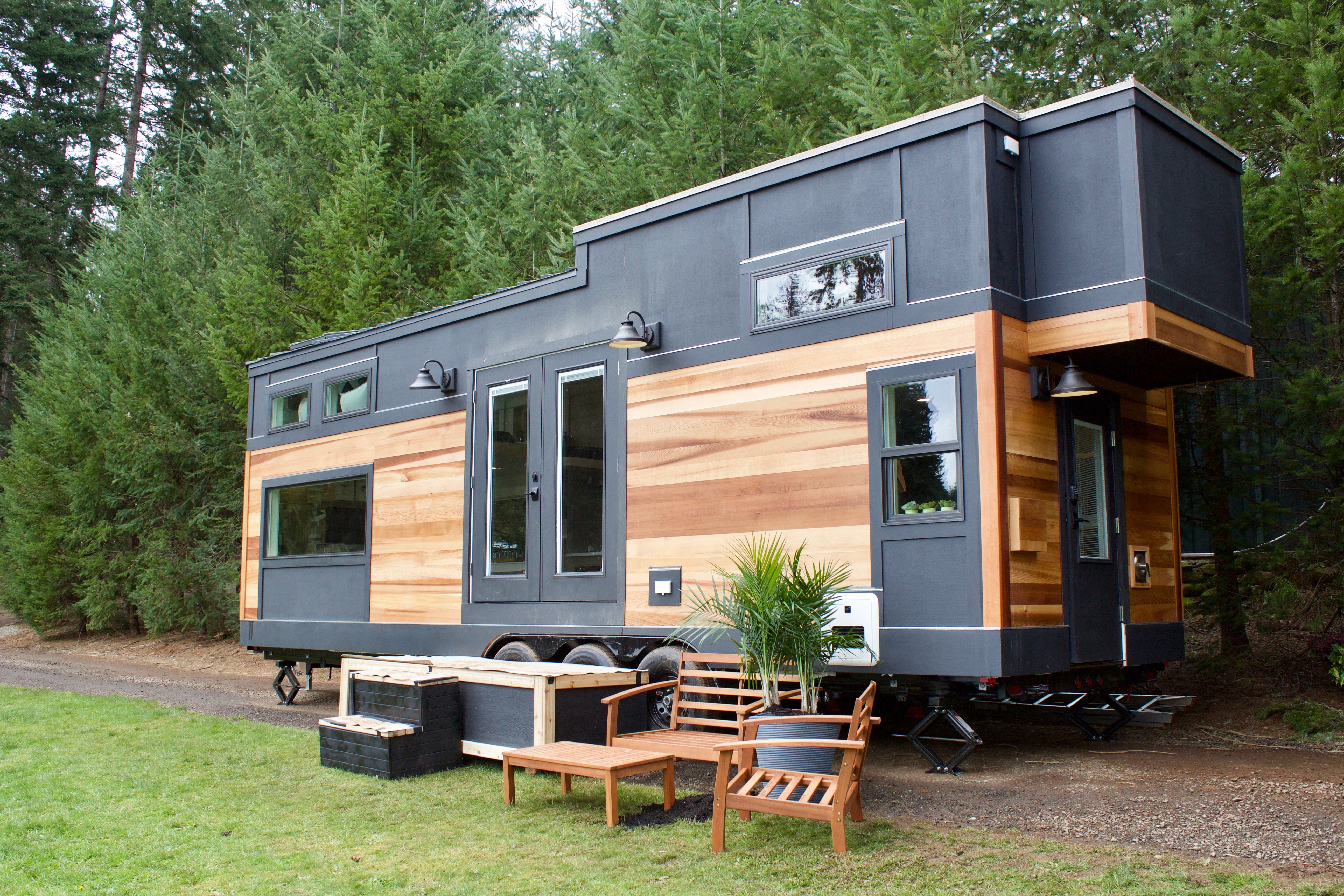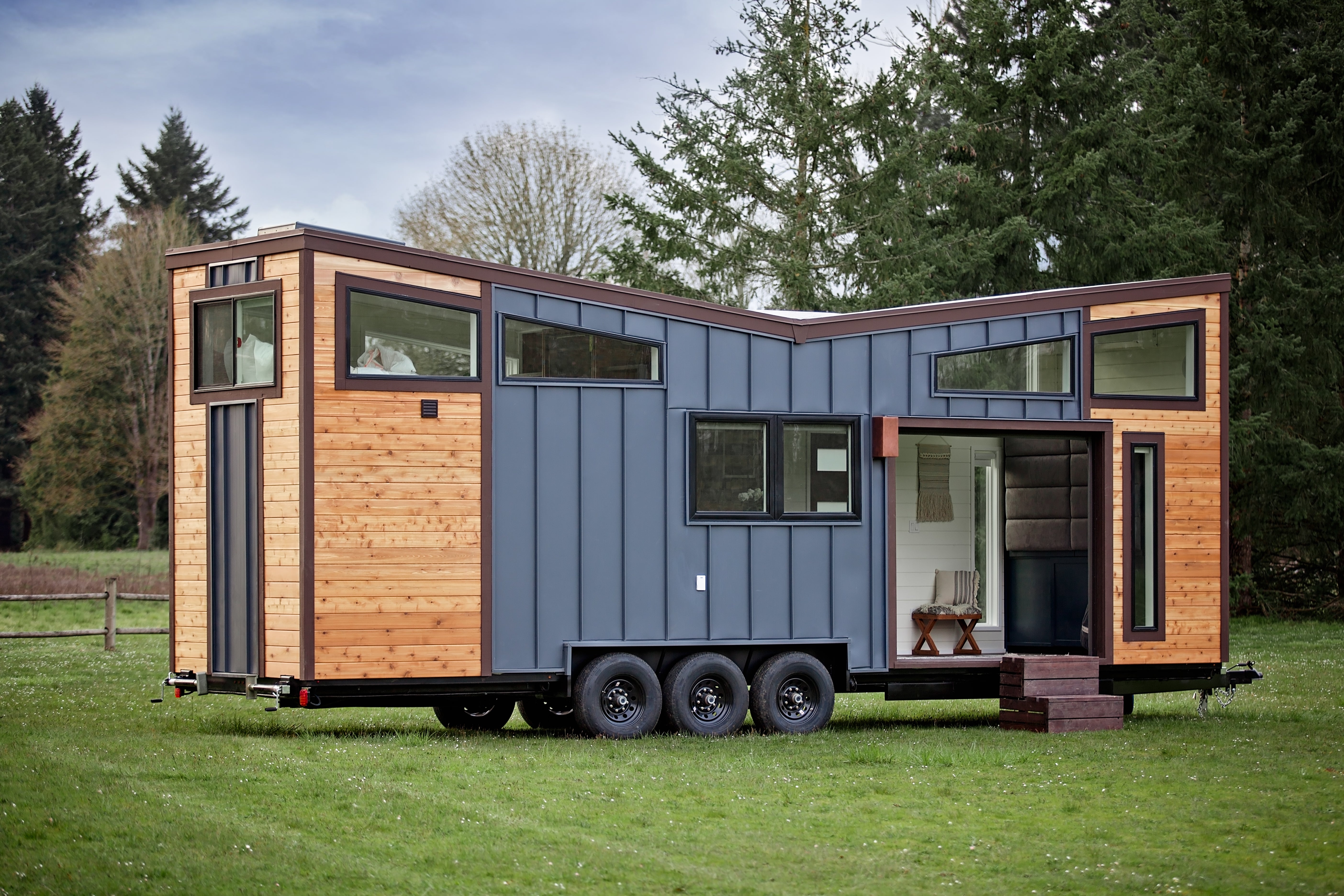One of the greatest appeals of a tiny house on wheels is the promise of mobility. The idea that you can hitch up your home, hit the road, and move to a new job, a new view, or even a whole new lifestyle is powerful. It’s freedom in its purest form.
But the reality often feels very different. Moving a 10,000-pound home is far less like a spontaneous road trip and much more like a game of logistical chess. Every piece — from the towing vehicle to road restrictions — has to fit perfectly, or you risk costly mistakes.
Some tiny house owners embrace the challenge of towing their home themselves, almost like a rite of passage. They see it as part of the adventure and part of what makes tiny house living unique. Others prefer to hand over the keys to professional haulers and focus their energy on what really excites them — deciding where to park next and how to settle into a new community.
So how do you know which path is right for you? This framework will guide you step by step, helping you weigh the risks, costs, and rewards of DIY towing versus hiring professionals. The goal is to help you make the decision with confidence — for your home, your budget, and your peace of mind.
Step 1: Understand the Weight of Your Decision
Tiny houses on wheels may look small compared to traditional homes, but they are deceptively heavy. A 24-foot home, fully furnished, can easily exceed 10,000 pounds. That’s a weight that pushes many tow vehicles — even heavy-duty pickup trucks — to their limits.
-
Know your GVWR: The Gross Vehicle Weight Rating of your truck tells you the maximum safe towing capacity. Exceeding it isn’t just unsafe — it’s illegal.
-
Check trailer ratings: Some trailers are designed only for “occasional moves.” If you plan to relocate often, you’ll need one rated for highway travel.
-
Axles and brakes: Tandem axles and reliable electric brakes aren’t optional. They are your primary defense against accidents on the road.
For a deeper dive into the technical side, TinyHousePlans’ guide to towing covers everything from distribution hitches to axle loads. If you’re leaning toward the DIY route, reading resources like that is essential before you ever hit the highway.

Step 2: Map the Route Before You Hit the Road
DIY movers often assume that if their vehicle can pull the load, the rest is easy. But routes matter.
-
Low clearances: Bridges, overpasses, and power lines aren’t always tall enough for a house.
-
Terrain: Steep grades test both your brakes and your nerves.
-
Permits: Some states require oversize load permits depending on width and weight.
Professional haulers often rely on mapping software designed for wide loads. DIY towers will need to do the homework themselves — sometimes with nothing more than DOT websites, phone calls, and caution.
Step 3: Calculate the Risks (and Who Carries Them)
Even the most confident DIYer must face the risks.
-
Insurance: Auto policies rarely cover towing a house. Will your insurer extend coverage, or will you need a rider? Hauling companies typically carry liability insurance.
-
Mechanical failure: A blown tire or axle issue on a highway can create a roadside emergency. Do you have the equipment, or the calm, to handle it?
-
Driving skill: A 28-foot house isn’t just heavier — it reacts differently in turns, stops slower, and is harder to stabilize in wind.
This is why some owners who want independence still call in pros for long moves, treating towing as a “choose your battles” decision.

Step 4: Weigh the Costs with Clarity
Cost is often the tiebreaker. DIY seems cheaper — until hidden expenses pile up.
-
DIY costs: fuel, permits, brake upgrades, trailer servicing, parking, possible breakdowns.
-
Pro costs: flat fee or per-mile rate, plus any special permits.
-
Time costs: taking unpaid days off work, longer travel times at cautious speeds.
This is where clarity matters. Before deciding, run the numbers side by side. A moving estimate calculator can give you a quick baseline of professional costs. Compare that to your DIY expenses — including the value of your time — and the choice often becomes clearer.
TinyHousePlans’ own guide on how to plan and execute a smooth move emphasizes budgeting for both expected and unexpected line items. Pairing that with a calculator helps you see the full picture.
Step 5: Know When to Hand Over the Keys
There are times when hiring professionals is less about money and more about peace of mind:
-
Cross-country moves: Multiple state lines, permits, and unpredictable weather.
-
Urban relocations: Tight turns, busy streets, parking restrictions — sometimes only specialists can navigate them.
-
Time-sensitive deadlines: Job relocations, lease expirations, or school schedules.
Handing over your house may feel like letting go of independence, but sometimes it’s the most responsible choice.
Step 6: Consider Hybrid Solutions
Not all moves are all-or-nothing. Many tiny house owners:
-
DIY local, hire long-haul: Tow short distances yourself, hire out interstate moves.
-
DIY house, hire contents: Tow the shell, but let movers handle belongings.
-
Phase moves: Relocate belongings first, then the structure later.
Hybrid approaches let you taste independence while respecting limits of budget, time, or skill.

The Human Factor
Beyond numbers and logistics, this decision is deeply personal. Some owners tow for the adventure — the thrill of driving their home down the highway. Others prioritize safety, preferring to arrive stress-free with everything intact.
Neither choice makes you more or less of a tiny house owner. What matters is making the decision with clear eyes and full knowledge of what’s at stake.
Conclusion: Freedom Meets Responsibility
Tiny house living is about intentional choices. You chose less square footage for more freedom. You chose design details for comfort and efficiency. Moving your home is another intentional choice — one that deserves the same care.
By knowing your numbers, planning your route, calculating risks, and weighing costs honestly, you can decide whether to hitch up yourself or hire the pros. Either way, the goal is the same: arrive safely, and start living big in your tiny space.






Share: